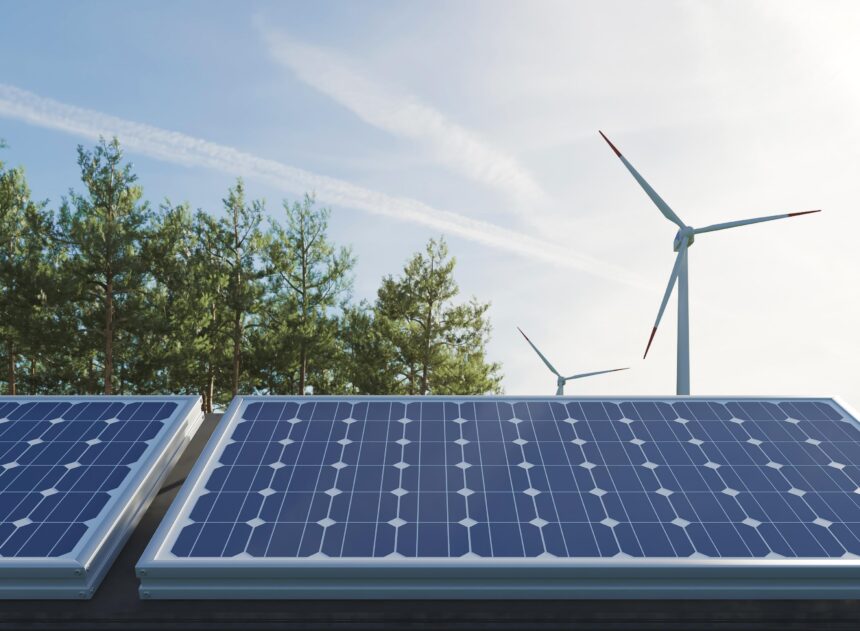In recent years, the importance of transitioning to renewable energy sources has become increasingly apparent. The need to reduce greenhouse gas emissions, combat climate change, and secure a sustainable future for generations to come has prompted a global shift towards alternative energy solutions. However, one of the significant challenges faced by renewable energy projects is access to financing. Fortunately, there are various avenues available for accessing loans and funding for alternative energy initiatives, enabling the development and implementation of renewable projects worldwide.
Traditional Financing Institutions Embrace Renewables
One positive trend in recent times is the increasing interest of traditional financing institutions, such as banks and investment firms, in supporting renewable energy projects. Recognizing the long-term viability and potential profitability of these ventures, many financial institutions have launched specific funding programs and initiatives for alternative energy solutions.
These programs often offer competitive interest rates, flexible repayment terms, and tailored financial products to suit the unique needs of renewable projects. Moreover, some banks have established dedicated teams of experts who specialize in renewable energy financing, ensuring that borrowers receive specialized guidance throughout the loan application and approval process.
Government Initiatives and Incentives
Governments around the world have also stepped up to promote the financing of renewable energy solutions. In many countries, there are government-backed initiatives and incentives designed to encourage investment in alternative energy projects. These initiatives may include low-interest loans, grants, tax incentives, and feed-in tariffs, among others.
Government-backed loans can provide a significant boost to renewable energy projects by offering favorable terms and conditions. Furthermore, the presence of government support enhances the credibility and attractiveness of such projects, making them more appealing to private investors and financial institutions.
Green Bonds and Impact Investing
Another avenue for financing renewable energy projects is through green bonds and impact investing. Green bonds are fixed-income financial instruments specifically designed to fund environmentally friendly projects, including renewable energy initiatives. These bonds attract investors who are keen to align their investments with sustainability goals and have a positive impact on the environment.
Impact investing, on the other hand, involves investing in companies or projects with the intention of generating a measurable social or environmental impact alongside a financial return. Many impact investors actively seek out renewable energy projects as they align with their values and long-term objectives.
Crowdfunding and Peer-to-Peer Lending
The rise of technology and online platforms has opened up new opportunities for financing renewable energy projects through crowdfunding and peer-to-peer lending. These platforms enable individuals or groups of investors to contribute funds towards renewable initiatives, either in exchange for equity or as a loan.
Crowdfunding campaigns for renewable energy projects have gained popularity, allowing project developers to tap into a wider pool of potential investors. Additionally, peer-to-peer lending platforms connect borrowers directly with lenders, simplifying the lending process and often offering more favorable terms than traditional financial institutions.
Navigating the Loan Application Process
While the availability of various financing options for renewable energy projects is encouraging, it is essential to navigate the loan application process effectively. Here are some key steps to consider:
- Project Preparation: Develop a comprehensive business plan, including financial projections, technical feasibility, and environmental impact assessments, to demonstrate the viability and potential profitability of your project.
- Research and Identify Potential Lenders: Explore the financing options available in your region, including banks, government programs, green bond issuers, impact investors, crowdfunding platforms, and peer-to-peer lending networks. Identify lenders or investors that align with your project’s goals and requirements.
- Prepare Loan Application Documentation: Gather all the necessary documentation required for loan applications, such as project details, financial statements, permits and licenses, contracts, and any other relevant information. Ensure that the documentation is accurate, up-to-date, and presents a compelling case for your project.
- Seek Expert Advice: Engage with professionals who specialize in renewable energy financing, such as financial advisors or consultants. They can provide guidance on navigating the loan application process, help with financial modeling, and ensure compliance with specific requirements.
- Maintain Communication and Transparency: Establish and maintain open communication channels with potential lenders or investors. Be prepared to provide additional information or address any concerns they may have during the evaluation process.
- Evaluate Loan Offers: Compare and evaluate loan offers carefully, taking into account interest rates, repayment terms, fees, and any additional benefits or support offered by the lender. Choose the option that best aligns with your project’s financial goals and long-term objectives.
Conclusion
Accessing loans and financing for alternative energy solutions is crucial for the successful development and implementation of renewable energy projects. Fortunately, the landscape of renewable energy financing has evolved, with traditional financing institutions, government initiatives, green bonds, impact investors, crowdfunding, and peer-to-peer lending platforms providing various options for borrowers.
By effectively navigating the loan application process and leveraging these financing opportunities, renewable energy project developers can secure the necessary funds to drive the transition towards a sustainable and greener future. With continued support and collaboration between public and private sectors, financing renewable projects will play a significant role in achieving a cleaner and more sustainable energy landscape globally.










